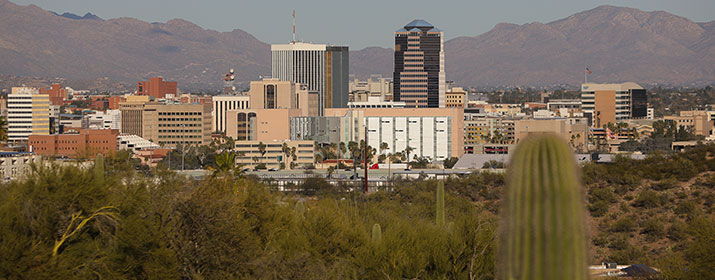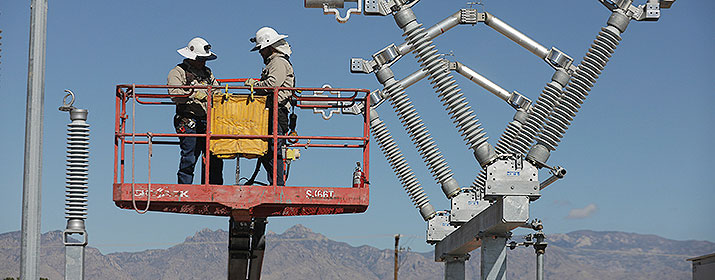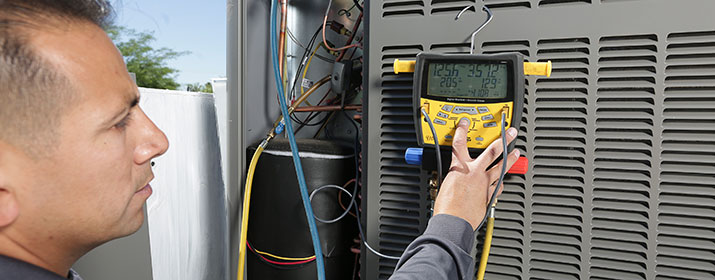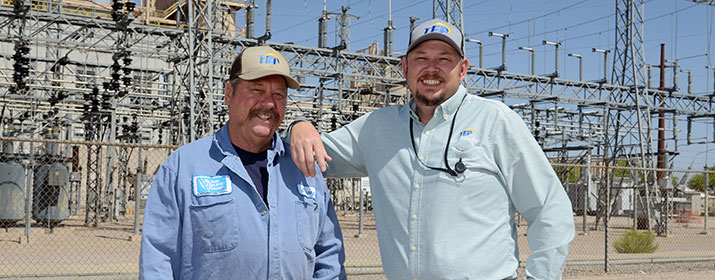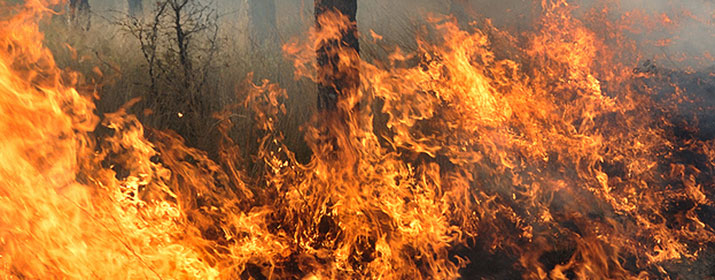
TEP works year-round to reduce the risk of its transmission systems causing or exacerbating wildfires that can destroy property and lead to power outages.
We take active measures to protect and reinforce our network of about 1,500 miles of high-voltage transmission lines running through remote forests and desert areas in Arizona and New Mexico. Widespread outages can occur if these systems are damaged or shut down due to a wildfire, interrupting delivery of power to customers from remote generating resources.
“We recognize wildfires can present a significant threat to public safety and reliable service to our customers. That’s why we continually inspect, repair and upgrade our equipment, and actively monitor for potential wildfires throughout the summer,” said Larry Robinson, Director of Land, Engineering and Project Management. “We’re ready to respond if a wildfire threatens our systems.”
Here are five ways TEP mitigates wildfire risks.
1. Strengthening our energy grid
TEP designs our transmission systems to withstand fire-related risks. We install equipment on non-combustible steel poles and apply flame-retardant paint in high-risk areas. We’ve also improved the grounding and bonding procedures of power pole hardware to reduce ignition risks.
Our System Control operators monitor transmission equipment around the clock to identify faults and de-energize equipment as needed to support wildfire mitigation and suppression efforts.
2. Vegetation management
TEP actively patrols and manages transmission line routes to keep trees and other vegetation from growing near electric equipment, which can affect reliability and create wildfire risks.
“We perform helicopter patrols of our transmission systems twice a year, once in the fall after the traditional summertime wildfire season and once in the spring after winter,” Robinson said. “We recently completed our spring patrols and didn’t observe anything that gave us any vegetation management concerns.” Watch a video of our transmission line patrol here.
TEP performs ground patrols of our 138-kilovolt (kV) lines once a year and uses drones as needed to get a closer look at hardware, conductor connectors and other pieces of equipment. We also perform ground patrols of extra-high voltage transmission lines every five years. Typically, we use the full width of our right-of-way to keep vegetation more than 300 feet away from our 345-kV transmission system.
3. Emergency planning and preparedness
TEP coordinates wildfire training and preparation efforts with neighboring utilities, the Bureau of Land Management, the U.S. Forest Service, the Arizona State Land Department, tribal offices, private landowners and other agencies before and during wildfire events.
If wildfires approach our transmission systems, employees are assigned to coordinate with firefighting agencies and local officials at incident command sites. TEP employees receive wildland fire training, which prepares them to respond to threats and coordinate more effectively with firefighting and land management agencies.
4. Situational awareness
TEP employees review Arizona wildfire forecasts that predict the potential for fires. They also attend regional fire preparedness meetings and participate in wildfire response training in Arizona and New Mexico. Employees monitor state and federal wildfire and emergency management websites to identify potential threats near TEP systems.
5. Outreach and education
TEP encourages customers to avoid potential fire risks by planting the “Right Tree in the Right Place” away from overhead power lines and other electrical equipment. We also use bill inserts, our “Plugged In” customer newsletter, our website and other channels to inform customers about our wildfire preparation efforts and about any active wildfires that could impact service reliability.
We also maintain open lines of communication with elected officials and regulatory agencies, including the Arizona Corporation Commission and the Office of the Governor.
In addition to these active measures, TEP is expanding its wildfire risk mitigation practices. “This year, we’re developing a more robust wildfire mitigation plan. We’re performing an additional risk assessment of our service territories and other areas where our facilities are located,” Robinson said.
Utility industry practices in the West are evolving and TEP continues to monitor and learn from other utilities to evaluate and adopt practices that make our systems more climate resilient, while ensuring safe, reliable and affordable power is available to our customers. New practices under consideration include:
- Potential development of a public safety power shut-off (PSPS) plan. The plan would establish criteria for TEP to preemptively shut down certain facilities in high-risk areas during periods of elevated wildfire risk and ensure comprehensive communication with customers, first responders, regulatory agencies and local officials.
- Enhanced weather monitoring, smoke detection and other technological solutions for our facilities to mitigate fire risk.

